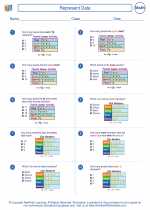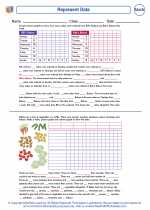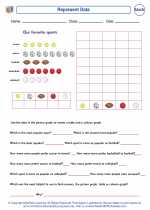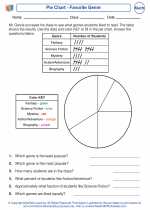Polygons
A polygon is a closed shape made up of straight-line segments. The segments of a polygon are called sides, and the points where the sides meet are called vertices. The most common types of polygons are triangles, quadrilaterals, pentagons, hexagons, and so on.
Types of Polygons
- Triangle: A polygon with three sides and three angles.
- Quadrilateral: A polygon with four sides and four angles.
- Pentagon: A polygon with five sides and five angles.
- Hexagon: A polygon with six sides and six angles.
- Heptagon: A polygon with seven sides and seven angles.
- Octagon: A polygon with eight sides and eight angles.
- Nonagon: A polygon with nine sides and nine angles.
- Decagon: A polygon with ten sides and ten angles.
Properties of Polygons
Some properties of polygons include:
- Interior Angles: The sum of the interior angles of a polygon with n sides is given by the formula (n-2) * 180 degrees.
- Exterior Angles: The exterior angle of a polygon is the angle formed between one side of the polygon and the extension of an adjacent side. The sum of the exterior angles of any polygon is always 360 degrees.
- Diagonals: A diagonal of a polygon is a line segment that connects two non-adjacent vertices. The number of diagonals in a polygon can be calculated using the formula n(n-3)/2, where n is the number of sides.
Regular and Irregular Polygons
A polygon is called regular if all its sides are of equal length and all its angles are of equal measure. Otherwise, it is called irregular.
Study Guide
When studying polygons, it's important to:
- Understand the definition of a polygon and be able to identify examples of polygons in everyday objects.
- Learn the names and properties of different types of polygons, including the interior and exterior angles, and the number of diagonals.
- Practice identifying regular and irregular polygons and understanding the differences between them.
- Work on solving problems involving the properties of polygons, such as finding the measure of interior or exterior angles, or calculating the number of diagonals in a polygon.
By mastering these concepts, you will develop a strong understanding of polygons and be able to apply your knowledge to solve various math problems.
.◂Math Worksheets and Study Guides Fourth Grade. Represent Data
Study Guide Represent Data
Represent Data  Worksheet/Answer key
Worksheet/Answer key Represent Data
Represent Data  Worksheet/Answer key
Worksheet/Answer key Represent Data
Represent Data  Worksheet/Answer key
Worksheet/Answer key Represent Data
Represent Data  Worksheet/Answer key
Worksheet/Answer key Represent Data
Represent Data  Worksheet/Answer key
Worksheet/Answer key Represent Data
Represent Data  Worksheet/Answer key
Worksheet/Answer key Pie Chart Budget
Pie Chart Budget  Worksheet/Answer key
Worksheet/Answer key Pie Chart - Favorite Genre
Pie Chart - Favorite Genre 

 Worksheet/Answer key
Worksheet/Answer key
 Worksheet/Answer key
Worksheet/Answer key
 Worksheet/Answer key
Worksheet/Answer key
 Worksheet/Answer key
Worksheet/Answer key
 Worksheet/Answer key
Worksheet/Answer key
 Worksheet/Answer key
Worksheet/Answer key
 Worksheet/Answer key
Worksheet/Answer key

The resources above cover the following skills:
Measurement and Data (MD)
Represent and interpret data.
Supporting Standard: Make a line plot to display a data set of measurements in fractions of a unit (1/2, 1/4, 1/8). Solve problems involving addition and subtraction of fractions by using information presented in line plots. For example, from a line plot find and interpret the difference in length between the longest and shortest specimens in an insect collection.
See the skills and knowledge that are stated in the Standard.